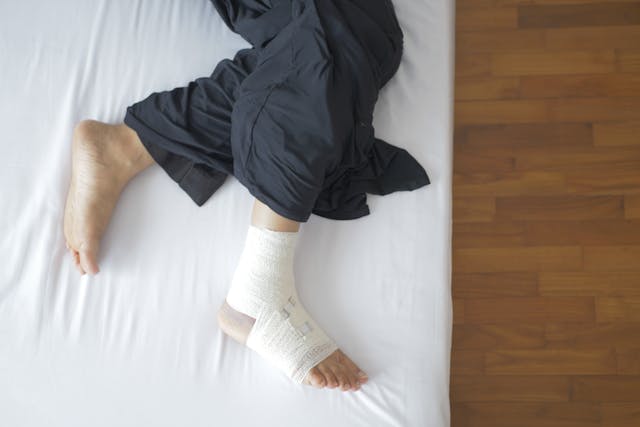Minor foot injuries are common, ranging from mild cuts and scrapes to bruises or small sprains. Although these injuries might not seem serious, proper wound care is key to preventing complications. Cleaning, dressing, and rest are key for a quick recovery.
Recognize Minor Foot Injuries
Knowing the type of foot injury you’re dealing with helps guide proper wound care and treatment. Minor injuries include small cuts, abrasions, mild sprains, blisters, or bruising. These can often be managed at home with basic care but should still be watched closely. Seek medical help if there is severe swelling, uncontrollable bleeding, or signs of infection like redness, warmth, or unusual pain.
Rest and Elevate the Injury
Rest is necessary for recovery, as putting weight on an injured foot can exacerbate the problem. Take a break from activities that stress the affected area. Elevating the injured foot above heart level for short periods during the day can help decrease swelling by improving blood flow and reducing fluid buildup.
Use Ice and Heat Therapy for Wound Care
If used appropriately, ice and heat therapy can support the healing process. For the first 48 hours, applying an ice pack to the injured area for 15-20 minutes several times a day can help reduce swelling and numb pain. Wrap the area with ice in a cloth to protect the skin. After two days, switching to a warm compress can relax sore muscles and improve circulation to promote healing.
Wear Appropriate Footwear and Provide Support
Proper footwear is another way to protect against a minor foot injury and prevent further strain. Opt for shoes with cushioning and arch support that do not pressure the injured area. Insoles or orthotics may further ease discomfort. Sandals or open-toed shoes can be helpful for specific injuries, like cuts or blisters, to keep the area ventilated.
Keep the Injury Clean and Dry
Wound care helps prevent infection and promotes faster healing. Gently clean cuts, blisters, or scrapes with mild soap and water, then pat the area dry. If necessary, cover the wound with a sterile bandage to protect it from dirt and bacteria, replacing the dressing daily or when it becomes wet. Keeping the area dry is usually enough for nonopen injuries like bruises or sprains.
Strengthen Foot With Gentle Exercise
Once pain and swelling subside, gentle foot exercises can help restore strength and flexibility. Activities like toe stretches or ankle rotations can improve circulation and prevent stiffness while promoting healing. Start gradually and stop if any exercise causes discomfort or worsening symptoms.
Seek Professional Help When Necessary
While most minor foot injuries can be managed at home, some situations require medical attention. Persistent swelling, pain that does not improve, or signs of infection should not be ignored. Consulting a healthcare provider can make sure you receive appropriate treatment and avoid complications.
Take the Right Steps for Foot Health
Caring for minor foot injuries involves proper wound care, recognition of the type of injury, rest, reducing swelling with ice therapy, wearing appropriate footwear, and maintaining cleanliness. Once the initial pain subsides, gradual exercise can help recovery. Always consult a professional if symptoms worsen or do not improve. Proper care speeds up healing and helps prevent long-term issues.

